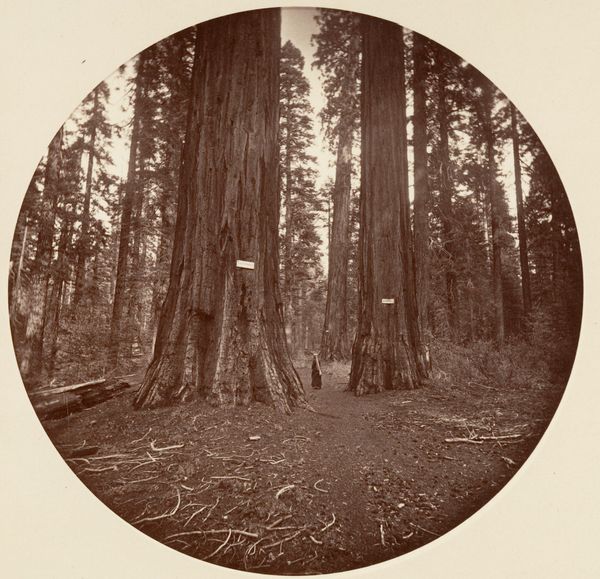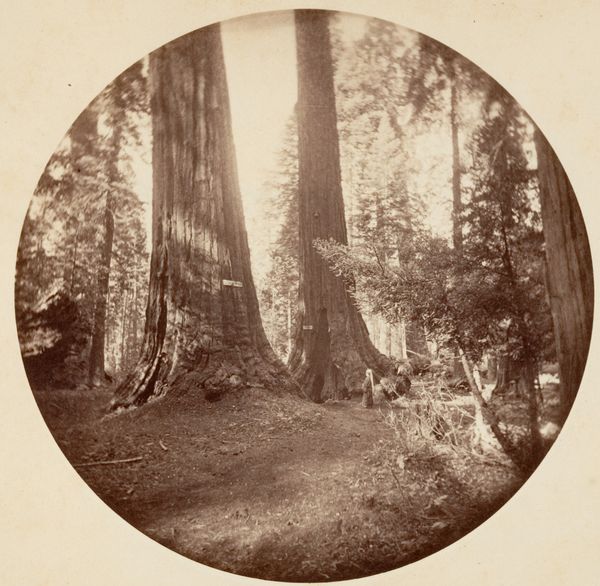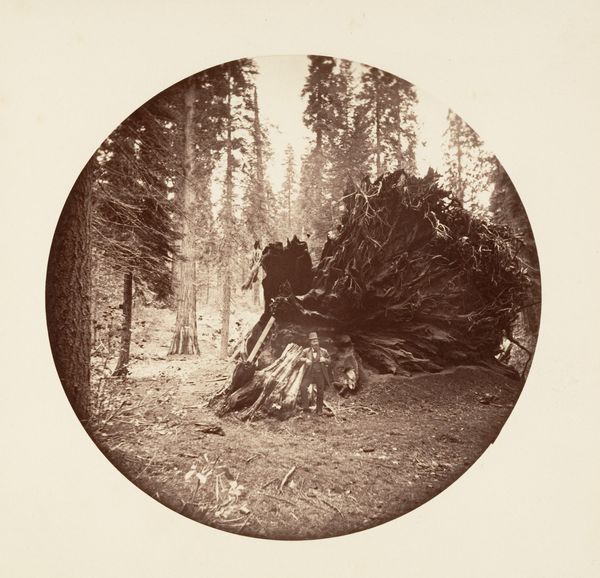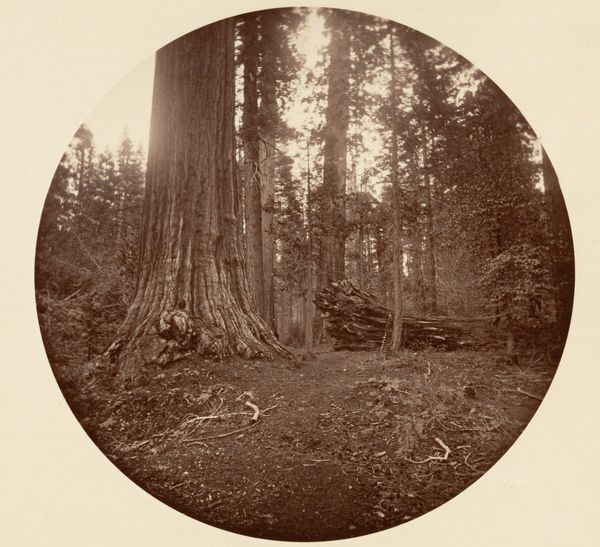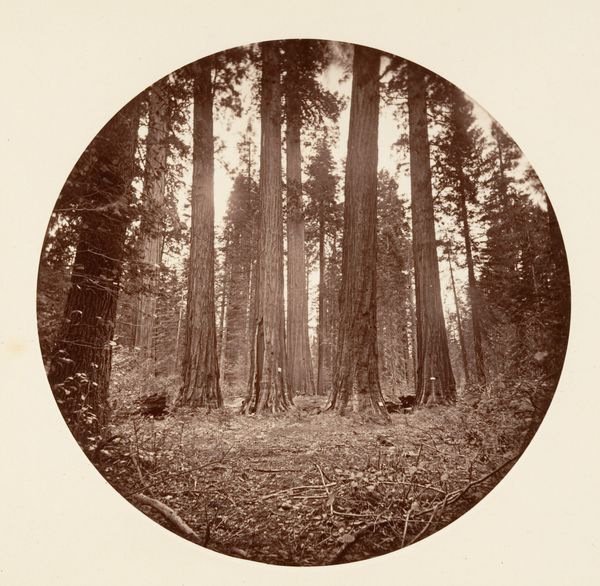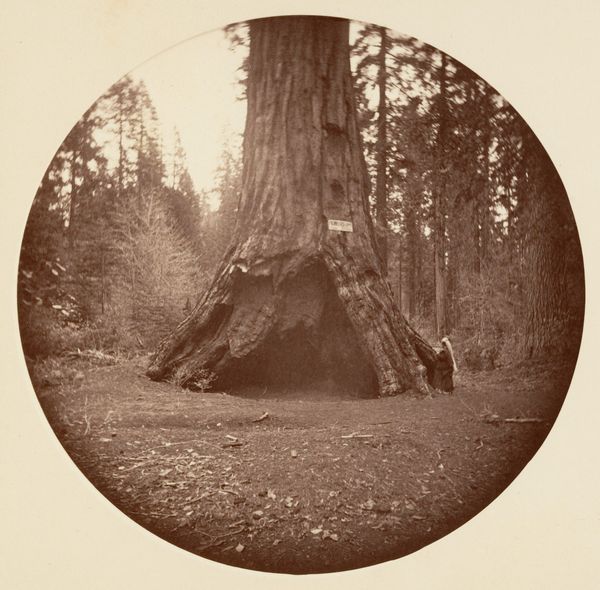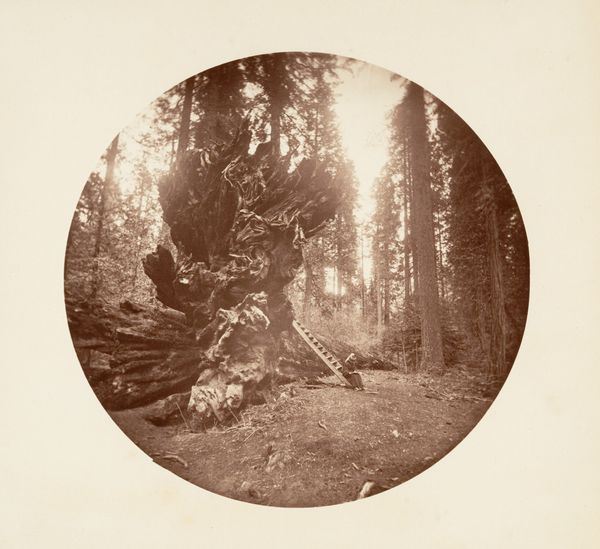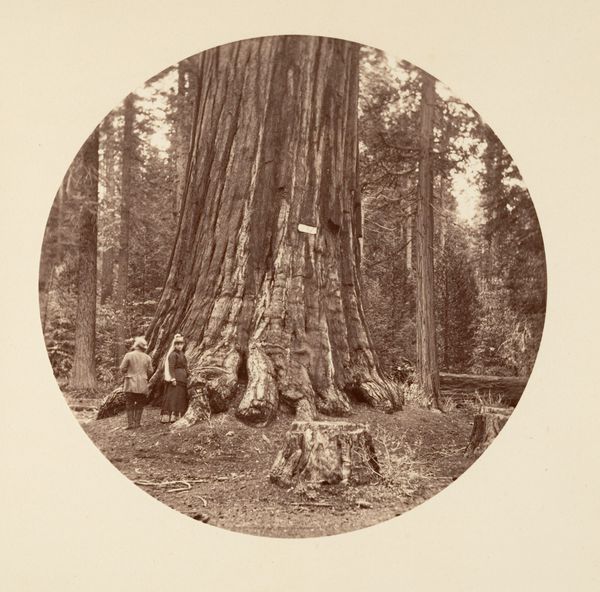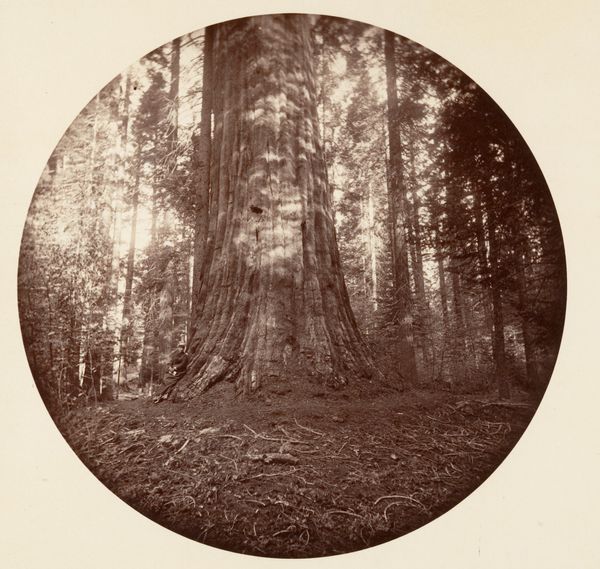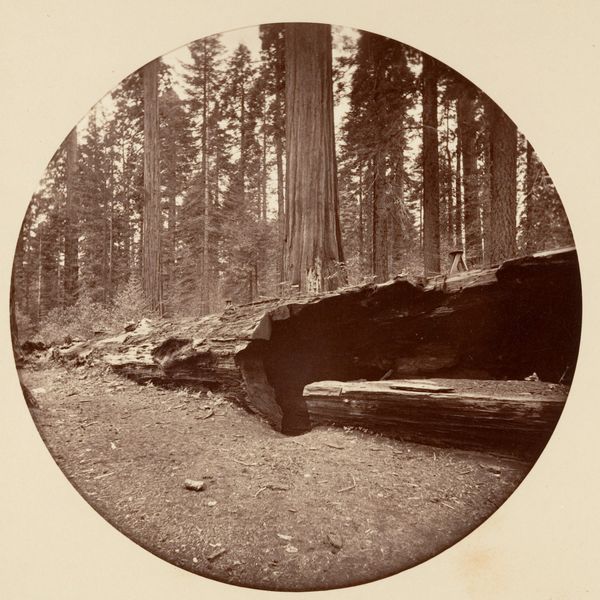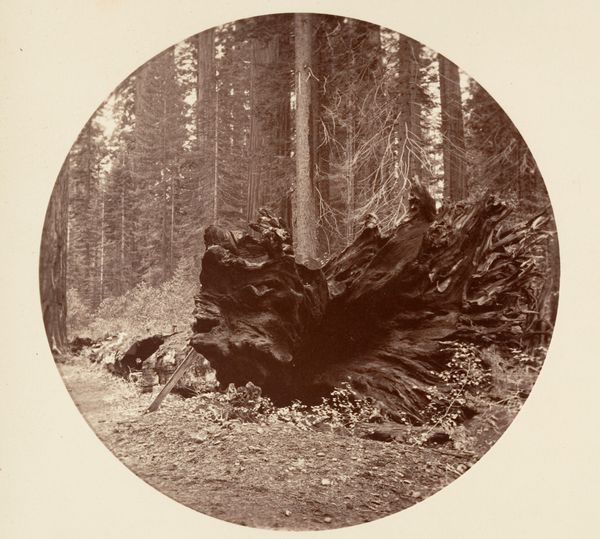
The Three Graces Seen Through the Bryant and Seward Calaveras Grove 1876 - 1880
0:00
0:00
Dimensions: Image: 12.5 x 12.5 cm (4 15/16 x 4 15/16 in.), circular Album page: 24 x 25.1 cm (9 7/16 x 9 7/8 in.)
Copyright: Public Domain
Editor: Here we have Carleton Watkins's photograph, "The Three Graces Seen Through the Bryant and Seward Calaveras Grove," dating from between 1876 and 1880. It’s a gelatin silver print, and there's something so serene and almost dreamlike about it, but also imposing, with the figures dwarfed by the trees. What do you see in this piece? Curator: Immediately, the title itself unlocks layers. Watkins isn't simply documenting the landscape; he's invoking classical mythology. "The Three Graces" suggests beauty, charm, and joy, yet the figures within this immense grove appear quite solemn. What does the juxtaposition of classical idealism and the overwhelming power of nature signify here? Editor: So the title isn't necessarily a literal description? Curator: Precisely. Consider the cultural memory embedded in those trees. These groves existed long before European settlers arrived. To name the photograph "The Three Graces" overlays a European sensibility onto a landscape with its own, separate history. It almost feels like a claim. Editor: I see what you mean. There's a tension between what's actually there and what's being imposed on it. What about the framing – the circular crop? Does that change our perception? Curator: The circular format softens the image, lends it a romantic, almost sentimental quality. It invites the viewer into a specific, curated world, framed within Watkins’s vision. The shape recalls classical portraiture, and suggests preciousness and containment. Is Watkins celebrating the sublime power of nature, or is he domesticating it for human consumption and aesthetic enjoyment? What do you think? Editor: I hadn't considered that duality, this idea of both celebrating and "domesticating" the natural world. It definitely gives me a new perspective on Watkins's intention and the historical context of the image. Curator: Indeed. Through symbol and form, Watkins created a cultural dialogue.
Comments
No comments
Be the first to comment and join the conversation on the ultimate creative platform.
